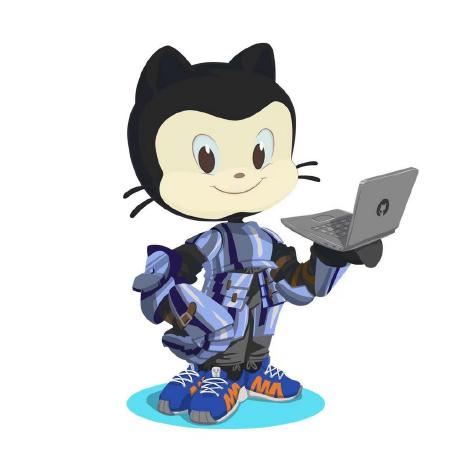Add watermark to images
Image watermarking is the process of placing an overlay text on top of the original image, usually in one of the corners. The first approach shown below is primarily based on the HTML5 <canvas> element while the second one uses watermark.js library, which requires just a few lines of code.
Use HTML Canvas
Below is a simple example to show that how it works, and there is also a real world example of image-watermark-tool you can check out.
<body>
<h1>Add Watermark to Image</h1>
<p>
Please upload a image and fill in the watermark text.
</p>
<input id="upload" type="file" accept="image/*" />
<input id="text" type="text" placeholder="watermark text"/>
<button>generate</button>
<div id="result" style="visibility: hidden;">
<h2>Watermaked image with text</h2>
<img id="watermakedImageWithText" />
</div>
<script>
const fileInput = document.querySelector("#upload");
const textInput = document.querySelector("#text");
const button = document.querySelector("button");
const resultDiv = document.querySelector("#result");
const originalImage = new Image();
fileInput.addEventListener("change", async (e) => {
const file = e.target.files[0];
originalImage.src = await fileToDataUri(file);
});
button.addEventListener("click", (e) => {
if (!originalImage.src) return;
const watermakedImageWithText = document.querySelector("#watermakedImageWithText");
watermakedImageWithText.src = watermakImageWithText(originalImage, textInput.value.trim());
resultDiv.style.visibility = "visible";
});
function fileToDataUri(field) {
return new Promise((resolve) => {
const reader = new FileReader();
reader.addEventListener("load", () => {
resolve(reader.result);
});
// read the contents of the file
reader.readAsDataURL(field);
});
}
function watermakImageWithText(originalImage, watermarkText) {
const canvas = document.createElement("canvas");
const context = canvas.getContext("2d");
const canvasWidth = originalImage.width;
const canvasHeight = originalImage.height;
canvas.width = canvasWidth;
canvas.height = canvasHeight;
// initializing the canvas with the original image
context.drawImage(originalImage, 0, 0, canvasWidth, canvasHeight);
// adding watermark text in the bottom right corner
context.globalAlpha = 0.5;
context.fillStyle = "blue";
context.font = "bold 40px serif";
// get width of text
const metrics = context.measureText(watermarkText);
context.fillText(watermarkText, canvasWidth - metrics.width - 20, canvasHeight - 20);
return canvas.toDataURL();
}
</script>
</body>The HTMLCanvasElement.toDataURL() method returns a data URL containing a representation of the image. The desired file format (image/png, image/jpeg or image/webp) and image quality (a number between 0 and 1 indicating the image quality) may be specified. If the file format is not specified, then the data will be exported as image/png.
Data URLs, URLs prefixed with the
data:scheme, allow content creators to embed small files inline in documents. They are composed of four parts: a prefix (data:), a MIME type, an optional base64 token if non-textual, and the data itself:data:[<mediatype>][;base64],<data>
toDataURL()encodes the whole image in an in-memory string. For larger images, this can have performance implications, and may even overflow browsers’ URL length limit when assigned toHTMLImageElement.src. You should generally preferHTMLCanvasElement.toBlob()instead, in combination withURL.createObjectURL().
Additionally, we want to convert the dataURL we receive from the drawing canvas to a Blob, then the Blob to a File with the file name and type specified.
async function save(dataURL: string) {
const blob = await fetch(dataURL).then(res => res.blob())
const file = new File([blob], `drawing.jpg`, { type: 'image/jpeg' })
const form = new FormData()
form.append('drawing', file)
// Upload the file to the server
await $fetch('/api/upload', {
method: 'POST',
body: form
})
.then(() => navigateTo('/'))
.catch((err) => alert(err.data?.message || err.message))
}// https://advanced-cropper.github.io/vue-advanced-cropper/
<Cropper
class="cropper"
:src="imageSrc"
:stencil-props="{
aspectRatio: 16 / 9
}"
ref="cropperRef"
/>
const handleCropSubmit = () => {
const { canvas } = cropperRef.value.getResult()
if (canvas) {
canvas.toBlob((blob) => {
if (blob) {
console.log('file size:', blob.size / 1024 + 'KB')
// new File(fileBits, fileName, options)
const file = new File([blob], 'cropped-image.png', { type: 'image/png' })
handleFileUpload(file)
}
}, 'image/png')
}
};Use third-party library
// Use the library `watermark.js` in the browser.
// image as watermark
watermark(['/img/shepherd.jpg', '/img/logo.png'])
.image(watermark.image.lowerRight())
.then(function (img) {
document.getElementById('composite-image').appendChild(img);
});
// text as watermark
watermark(['/img/field.jpg'])
.image(watermark.text.lowerRight('MyPhoto', '28px serif', '#fff', 0.5))
.then(function (img) {
document.getElementById('text').appendChild(img);
});